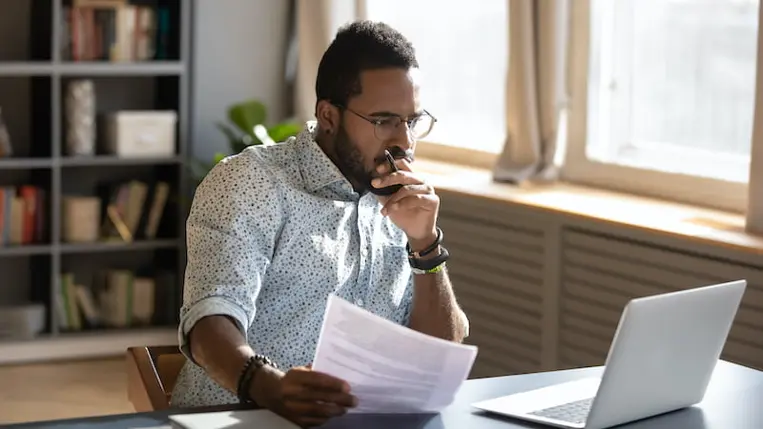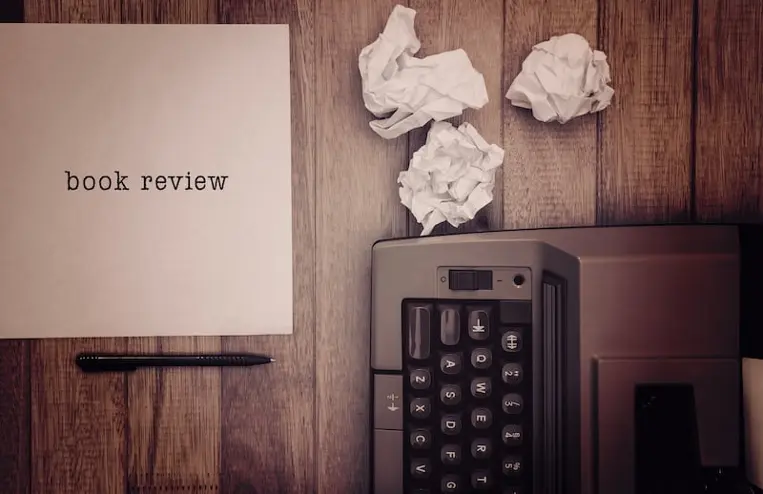Fair use is a common legal defense to claims of copyright infringement.
Under the doctrine of fair use, content creators can copy parts of another person's intellectual property as long as they meet certain criteria.
In this article we'll outline the basics of fair use as it's used in U.S. copyright law. However, please keep in mind that fair use claims are incredibly case-specific.
Always speak to an attorney if you have any questions about whether your use falls under this doctrine.
Fair Use Basics: What You Need to Know
The fair use doctrine is generally outlined in Section 107 of the Copyright Act. As outlined in this law:
The fair use of a copyrighted work...for purposes such as criticism, comment, news reporting, teaching (including multiple copies for classroom use), scholarship, or research, is not an infringement of copyright. In determining whether the use made of a work in any particular case is a fair use the factors to be considered shall include (1) the purpose and character of the use, including whether such use is of a commercial nature or is for nonprofit educational purposes; (2) the nature of the copyrighted work; (3) the amount and substantiality of the portion used in relation to the copyrighted work as a whole; and (4) the effect of the use upon the potential market for or value of the copyrighted work.
Copyright Law of the United States (Title 17) — Section 107
As you can see in the law, the fair use doctrine applies to any use or copying of a copyrighted material that is done for a limited purpose or in a transformative manner.
While there are no real rules to fair use (besides the section quoted above), most fair use cases fall into one of two categories:
- Commentary and Criticism
- Parody
Importantly, most of the rules and guidelines surrounding fair use are encoded as case law, so courts and parties settle fair use cases on a case-by-case basis.
While most cases will fall under one of the two main categories, it's still important for content creators to speak with a lawyer if they feel that their use of another person's intellectual property approaches the boundaries of fair use.
Commentary and Criticism
Most forms of commentary and criticism fall under fair use, provided they follow the four fair use elements noted in the code section quoted above.
For instance, if you're writing a book review you can reproduce certain sections of the work as long as you follow the guidelines outlined in the fair use doctrine.
Copying the entirety of a short story into your review, for example, would likely not count as a fair use.
On the other hand, copying a line or two for a section about the content of those two lines would most certainly fall under fair use.
Overall, there is a balancing system to measure the public benefit of your copying with the rights of the owner and any other considerations the court deems relevant.
The court is the only party that can definitively label a use as fair.
Parody
Parody is defined as a work that ridicules another, usually better-known, work by imitating it in a comedic way.
Unlike other forms of fair use, parody allows for extensive use of the original work in order to "conjure up" the original in a comedic way.
The idea is the value of your content is based on people understanding the source material to get the joke, so you have greater latitude to copy, generally.
For example, a common use of parody appears in Youtube videos where people will replace the audio of a clip with funny voice lines or other comedic elements to create a parody that is transformative in nature while also "conjuring up" the image of the original work through the actual video clips.
The 4 Basic Elements of Fair Use
Unfortunately, the only way to establish whether a particular use of copyrightable material counts as fair use is to take it to federal court.
Importantly, as noted in the law section quoted above, judges will always use four well-established factors to determine the eligibility of a fair use claim:
- The purpose and character of the use, including whether such use is commercial in nature or for nonprofit educational purposes.
- The nature of the copyrighted work.
- The amount and substantiality of the portion used in relation to the copyrighted work as a whole.
- The effect of the use on the potential market for or value of the copyrighted work.
When considering whether your use of another person's work counts as fair use, it's often wise to consider all four of these elements in detail.
1. The Transformative Factor
The purpose and character of the use of the copyrighted work is also called the “transformative factor.”
In this context, transformative refers to the relative amount or type of transformation that has occurred from the original copyrighted work to the new work.
For example, a piece can be transformed by adding new expression or meaning to the original work, or by adding new information, aesthetics, insights, and/or understanding in a way that builds on the content of the original.
Another common transformative use is the conversion of a work from a commercial to a nonprofit or educational use (and vice-versa).
For example, most forms of scholarship and research would count as fair use since they are beneficial to the public and are not intended to be commercial in nature.
In this way, an academic paper or book might be able to copy more of a work than a commercial book simply due to the fact that its use is primarily to educate.
Keep in mind, there is not a magic percentage for transformative that ensures fair use will apply.
Also, some changes to the content may be highly transformative, but rather than qualifying as a fair use, your use may be labeled as a derivative work.
You should consult with an attorney to discuss this possibility.
For example, if you take a book and "transform" it into a movie, then you have produced a derivative work, even if you added your own inspiration and elements.
Unless it's authorized or licensed, the creation of such a movie was in violation of the original copyright holder's rights.
2. The Nature Factor
This factor largely rests on the degree to which the work that was used relates to the general purpose of copyright law: to encourage creative expression.
In this way, the nature of the work being copied will greatly affect a determination of fair use in an infringement case.
For example, more creative or imaginative work (such as a song or fictional short story), which is more "original" for copyright purposes, tend to have greater protection than works like non-fiction stories or news reports.
This is because such factual works are generally less expressive in nature or less "original", meaning you can copy larger sections of them without running into infringement concerns.
The publication status of a work is also an important factor in this regard, as unpublished works often carry stronger protections than published ones.
3. The Amount and Substance Factor
Further, courts will generally look at both the quantity and quality of the copyrighted material that was used.
In this way, if the portion you take is considered the “heart” of the work it could still be considered copyright infringement, even if you only copy a small portion of it.
For example, copying the thesis statement from an academic paper or a set of core insights from a new book would largely fail the fair use test, as you would be copying the "substance" of the original work.
However, the courts in Campbell v. Acuff-Rose Music, Inc. allowed 2 Live Crew to copy the "heart" of Roy Orbison's song "Pretty Woman," even though it was a commercial use, because the court found it to be necessary for their parody.
Again, this cannot be determined until you bring an infringement case to federal court.
4. The Effect on the Market Factor
Uses that deprive the copyright owner of income are also generally not covered under the fair use doctrine.
Courts will often consider whether the unlicensed use harms the existing or future market for the original owner's work.
For example, if a website copies an artist's painting and sells it as a print, this use would likely not count as fair since it deprives the artist of a significant share of the online market for their work.
This applies to other types of markets, generally.
If an artist makes a song within the "country" genre, and your cover of it is falls within "metal," you may have transformed the song and also cut into the "metal" market for the artist.
Musical covers have their own issues with respect to licensing and copyrights, so you should make sure you speak to a copyright attorney before releasing your new song.
How to Identify a Fair Use of Your Own Works
While you can’t be absolutely sure of the fair use of your works without going to federal court, there are some ways you can identify potential fair use of your own work(s).
First, you can think through all of your pieces with regards to the four factors of fair use:
- Does the infringing work transform your work in any way, such as by adding new expression or meaning or by using it as a part of academic scholarship?
- Can the nature of your work lead to a determination of fair use, such as if you wrote a biography or a technical document rather than a fictional story?
- Does the infringing work copy significant portions of your work.
- Does the infringing work affect your ability to generate revenue in your target market or a related market?
Note, however, that you should talk to an attorney even if someone else's work falls under these categories.
Again, copyright law is incredibly fact-specific, and only an attorney can truly determine whether or not you have a case for copyright infringement.
Conclusion
In general, you cannot prevent someone from utilizing your work as long as they follow the guidelines outlined in the law on fair use:
- The use must be transformative.
- The use must take the nature of your own work into consideration.
- The work must not copy significant elements of your own work, either in quantity or quality.
- The work must not affect your ability to sell your work to your target market.
However, there are steps you can take to protect your work, including registering your copyright and posting a copyright label or disclaimer.
Importantly, you should always speak to an attorney if you feel that someone is infringing on your copyright protections.
Fair use is a legal defense and not an automatic right.
Simply because you or someone else feels something ought to be fair use does not mean a court will find it so.
Copyright law is often incredibly fact-specific, and speaking with an attorney is the only real way to gain peace of mind when it comes to claims of copyright infringement.


